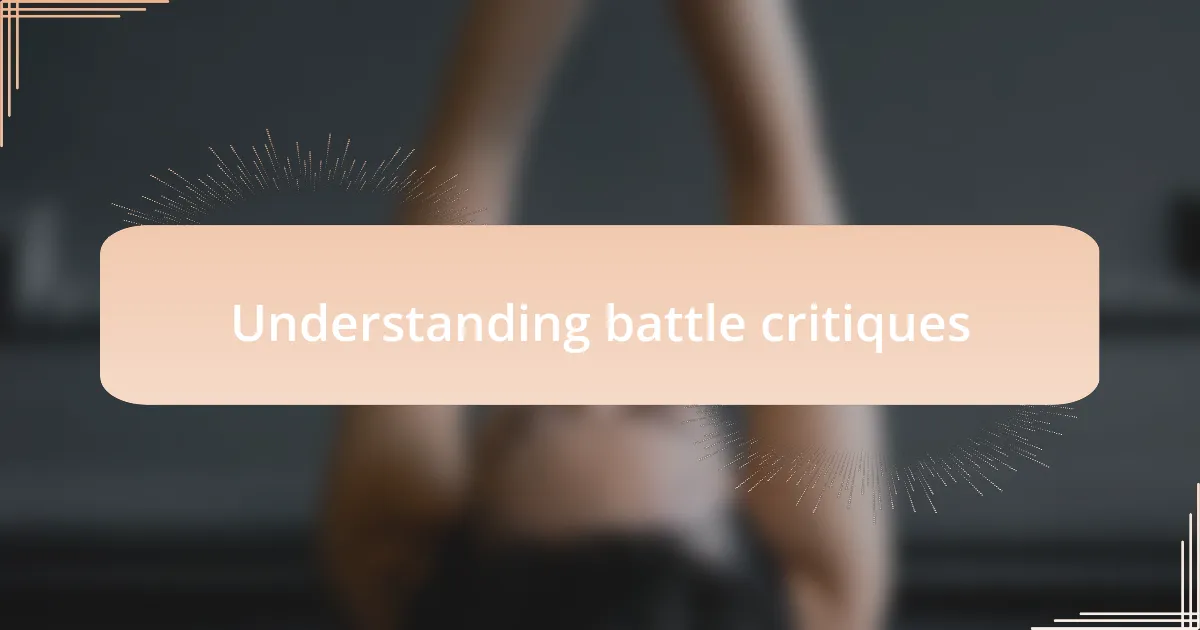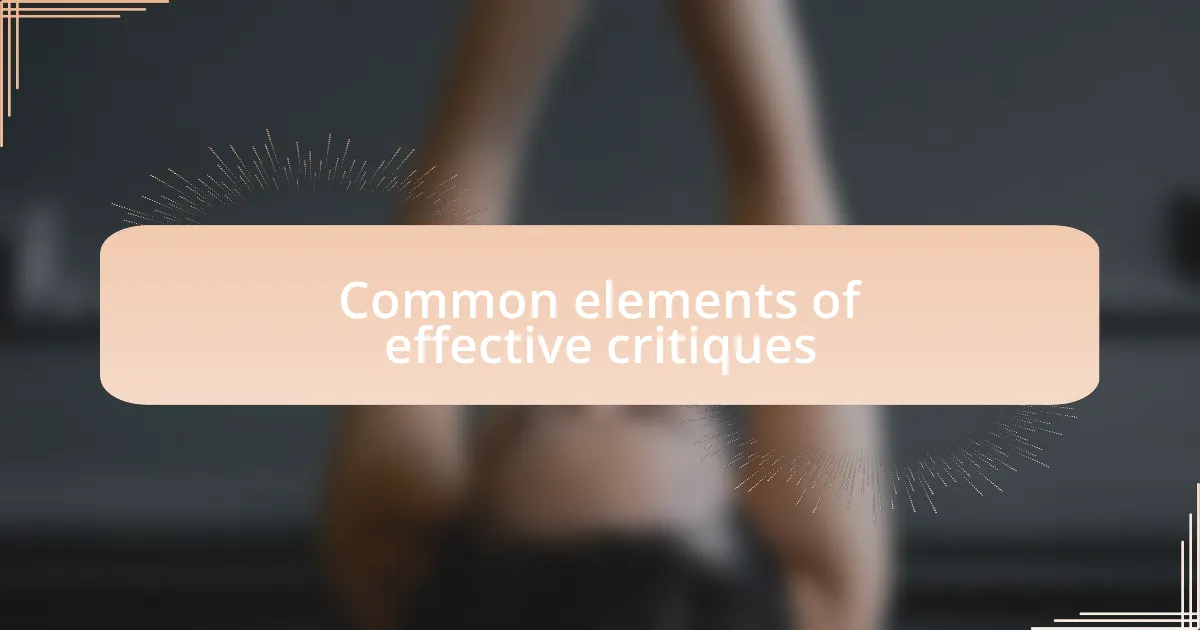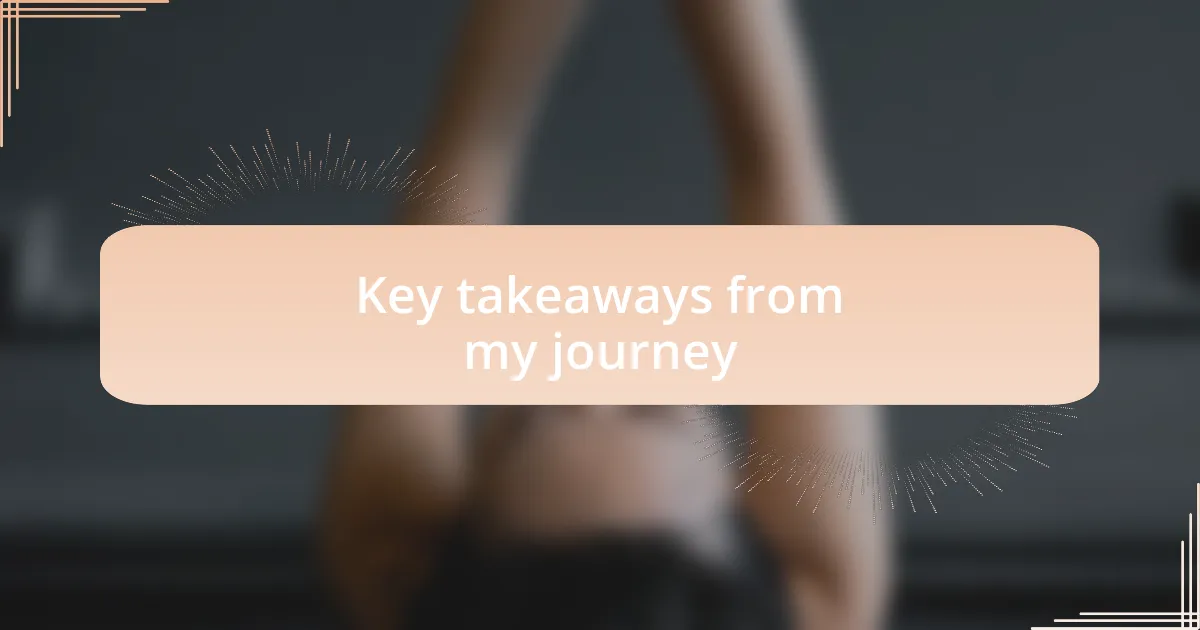Key takeaways:
- Embrace critiques with an open mind; they foster personal growth and highlight areas for improvement.
- Effective feedback should be specific, balanced, and encourage dialogue to enhance understanding and learning.
- Applying critiques requires commitment and a gradual approach to avoid overwhelming feelings, allowing for measurable progress.
- Vulnerability in sharing performances can lead to transformative insights and breakthroughs in skill and expression.

Understanding battle critiques
When it comes to battle critiques, I’ve realized how crucial they are for personal growth. After my first battle, I was eager for feedback, and the constructive criticism I received shifted my perspective. It helped me see my strengths and, more importantly, the areas that needed improvement. Have you ever felt that rush of realization when someone points out what you’ve overlooked?
Understanding the nuances of a critique can transform your approach to breakdancing. I recall a moment when a seasoned dancer highlighted the importance of musicality over just flashy moves. That simple insight reshaped my routines, pushing me to connect more deeply with the music. Isn’t it fascinating how one small comment can lead to such significant changes?
It’s essential to embrace critiques with an open mind, even if they sting initially. I remember a particularly harsh critique that left me feeling defeated at first. But as I processed the feedback, I saw it as a stepping stone, not a setback. How do you handle criticism? For me, embracing it has been a vital part of my journey in the breakdancing community.

Importance of feedback in breakdancing
Feedback in breakdancing is like the compass that guides your journey. I vividly remember a moment when a judge pointed out my timing issues during a battle. Initially, I felt discouraged, thinking I was being called out for a mistake; however, that feedback spurred me to practice with a metronome, which ultimately sharpened my performance. Have you ever had a critique feel more like guidance than criticism?
Embracing constructive feedback can lead to unexpected breakthroughs. There was a time when a mentor suggested I film my practices and analyze them. Watching myself dance was eye-opening—I could see areas where I lacked precision that I hadn’t noticed while I was in the flow. This experience taught me that sometimes, stepping back can give you clarity on your movements. What tools do you use to evaluate your progress?
The importance of feedback goes beyond skill improvement; it fosters a sense of community. I’ve had the pleasure of exchanging critiques with fellow dancers, and it’s incredible how that openness builds trust and friendship. When we support each other by sharing insights, we elevate the entire breakdancing scene. Don’t you think that sharing knowledge can create a stronger bond among dancers?

Common elements of effective critiques
Effective critiques often share a few key elements that make them truly valuable. For instance, specificity stands out as crucial; vague feedback does little to help a dancer grow. I recall a time when a fellow breaker pointed out my use of space: “You were too confined to the corner.” Those words stuck with me, and from that day, I made a conscious effort to claim the whole floor during my battles.
Another essential element is the balance between praise and critique. I remember receiving a video review where the judge started with compliments about my style before diving into technical issues. That approach felt encouraging rather than discouraging, making it easier to digest the advice. Have you ever found that a gentle balance can make a critique resonate more deeply?
Lastly, a good critique encourages a dialogue rather than merely delivering a verdict. I had an experience where I could ask the judge follow-up questions about certain moves I struggled with. This interaction not only clarified my doubts but also fostered a deeper understanding of my dance style. How often do you seek a conversation after receiving feedback? It’s a powerful step toward growth in our breakdancing journey.

Applying critiques to improve skills
When I reflect on the critiques I’ve received, I realize that applying them requires a real commitment to self-improvement. For example, after a particularly harsh battle, I was advised to work on my transitions. I took that advice to heart, dedicating practice sessions solely to fluidity between my moves. The progress I made felt rewarding, turning initial frustration into controlled elegance. Have you ever transformed a weakness into a strength through focused practice?
I think it’s vital to integrate feedback gradually to avoid feeling overwhelmed. When I received critiques on my freezes, I chose one specific aspect—like the precision of my landing—to focus on. This narrowed approach allowed me to see tangible progress without getting lost in a sea of suggestions. It’s kind of like building a house: laying down one brick at a time makes the overall structure stronger. How could you break down critiques into manageable goals?
Moreover, sharing your journey of applying critiques with fellow dancers can be incredibly empowering. In one instance, I teamed up with a partner who had a different perspective on my critiques. We exchanged tips and supportive feedback, creating an environment of mutual growth. This collaboration not only reinforced my understanding but also reminded me that improvement is often a shared experience. Have you found value in learning with others? It can truly elevate your skills in ways you might not expect.

Personal experiences from battle critiques
Reflecting on my battle critiques often brings back a memorable experience. After one intense session, a respected b-boy told me my energy seemed forced at times. At first, I was taken aback, but then it struck me; I was so focused on nailing each move that I forgot to feel the music. That feedback sparked a change in my mindset. Have you ever realized that embodying the rhythm can make all the difference?
Another critique that stands out came from a fellow dancer who mentioned my body language lacked confidence during my routines. Initially, I felt defensive, but then I considered their perspective. I decided to try performing in front of a mirror to connect with my persona on stage. The shift was profound; not only did my moves improve, but I found a newfound joy in expressing myself. Isn’t it amazing how a simple observation can lead to such transformative growth?
One of the most impactful critiques I experienced was during a local battle where an audience member pointed out my inconsistency in executing windmills. Initially, it felt like a punch to the gut, but it lit a fire in me. I used that feedback to construct a focused training regimen, honing my technique. After weeks of practice, my confidence soared and I couldn’t help but smile when I finally showcased my refined moves. Have you ever turned a critical comment into a motivating force? It’s those moments that truly validate our passion for breakdancing and drive us to excel.

Key takeaways from my journey
Each critique I’ve received has imparted a lesson that transcends the dance floor. Early on, a seasoned competitor reminded me that every battle is not just about winning, but about growth. I remember leaving that encounter feeling enlightened, realizing that true success lies in learning from every experience. Have you ever felt a shift in perspective that changed your entire approach to your passion?
Another pivotal moment for me came when a mentor suggested I diversify my style. I was rigidly sticking to a few moves that I excelled in, but their encouragement to experiment with different techniques pushed me out of my comfort zone. I started incorporating some elements from other dance forms, and honestly, it was exhilarating. Have you ever stepped outside your comfort zone and discovered something new about your abilities?
Lastly, I learned the value of resilience through the critique process. After facing multiple setbacks in performances, a friend reminded me that every stumble is an opportunity to rise stronger. That perspective helped me embrace failures, viewing them not as hindrances but as stepping stones to improvement. Can you recall a time when a setback transformed into motivation for your progress? I believe that it’s those lessons that keep us moving forward, propelling our journey in breakdancing.

Transforming critiques into action
Transforming critiques into action is all about embracing feedback as a catalyst for growth. I recall sitting on the sidelines after a particularly tough battle, feeling a mix of disappointment and frustration when a fellow dancer pulled me aside. They pointed out nuances in my movements, suggesting I focus more on flow rather than just the individual steps. Instead of dismissing their advice, I decided to take it to heart and dedicate my next practice sessions to mastering transitions. Have you ever experienced a moment where feedback reshaped your practice? It can be a game changer.
One lesson that stands out is the importance of setting specific goals based on feedback. After receiving harsh criticism about my stage presence, I realized I needed to project more confidence while dancing. I set a goal to practice my performance in front of a mirror daily, refining not just my moves but also my expressions. This small shift helped me connect with the audience on a deeper level. Have you ever set a goal inspired by feedback that transformed how you perform?
Taking action from critiques also means being willing to be vulnerable. There was a time when I shared my recent battle footage with friends for their insights. It was nerve-wracking! However, their constructive criticism allowed me to see my performance through fresh eyes, leading to breakthroughs I hadn’t anticipated. I learned that vulnerability is not a weakness; it’s a powerful tool for growth. Have you allowed yourself to be open to critique, even when it feels uncomfortable? Embracing that discomfort can be the first step toward incredible transformation.